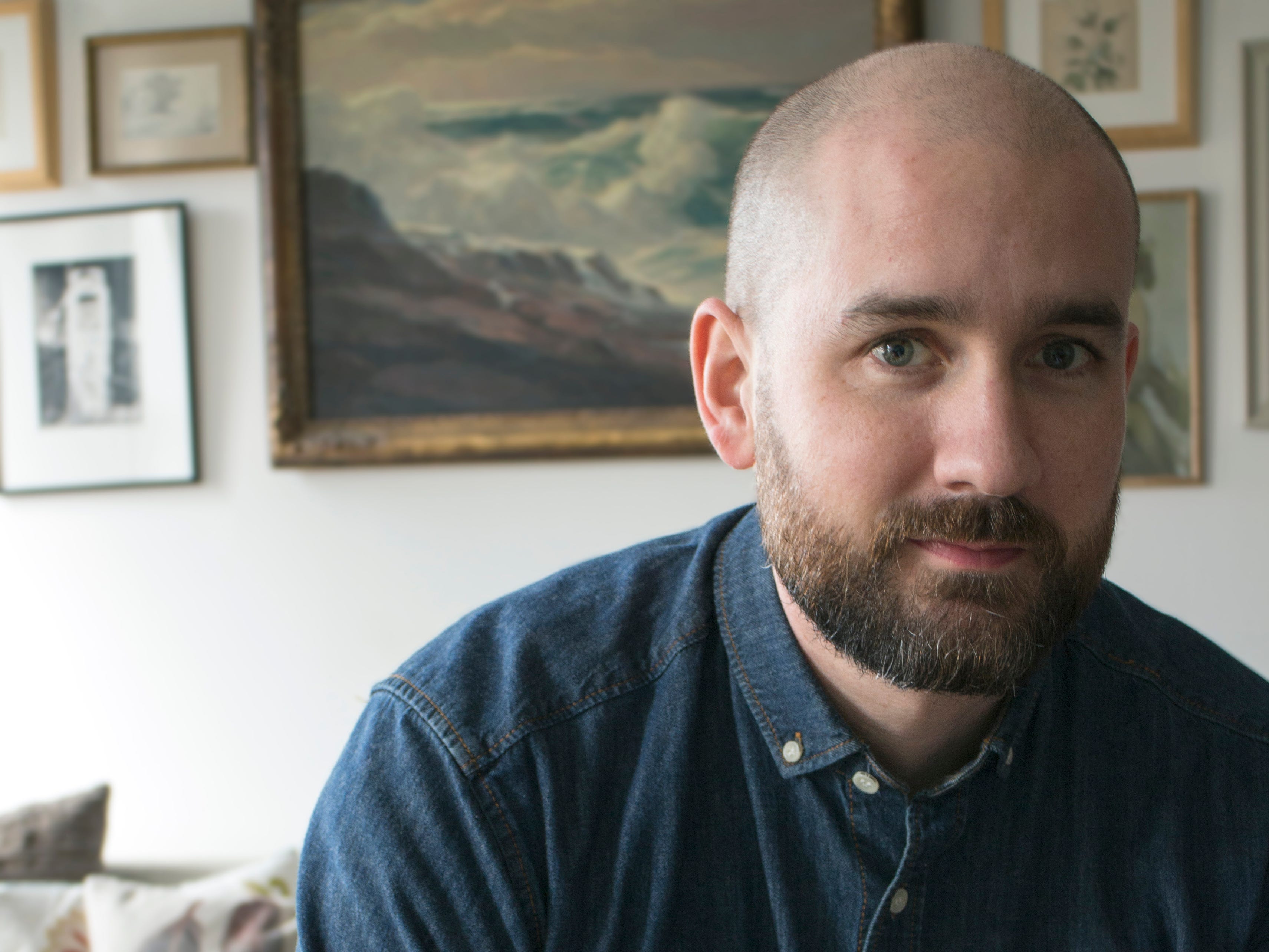
Courtesy of Peter Brown
When author and illustrator Peter Brown set out to write “The Wild Robot,” he didn’t head to a studio or café — he went to the Catskills, Maine, and the Pacific Northwest to find inspiration. When I had the chance to connect with Brown, I knew I had to turn to an expert who truly appreciated the book: my 7-year-old son.
“I tried to spend as much time in kind of a wilderness area as I could to feed my imagination, give me little ideas, remind myself of the kind of sounds that you hear when you’re out in the woods,” Brown told me and my son over a video interview.
That juxtaposition — the mechanical and the natural — sits at the heart of “The Wild Robot,” Brown’s beloved middle-grade novel and now an Oscar-nominated major motion picture from DreamWorks. “The last place you’d expect to find a robot is out in the wilderness,” Brown explained. “And so I thought, well, that’s kind of interesting.”
My three children agree. They are such fans of the movie that we ended up not only buying it, but also getting the book to read the original story, which we’ve already enjoyed multiple times. My son had lots of questions to ask Brown, from whether he liked robots to whether there would be more movies starring his favorite robot, Roz.
He wanted readers to care about the robot
To prepare for the interview, my son and I talked about our favorite parts of the movie and the book. I asked him what he wanted to ask Brown, and he surprised me with how much he wanted to know, including why the robot doesn’t have a mouth but can still talk, and more profound questions that, as a parent, moved me.
For those who aren’t hardcore fans like we are, “The Wild Robot” follows Rozzum Unit 7134 (a.k.a Roz), a machine that washes ashore on a remote island and must learn to survive — and eventually, thrive — among wildlife. “This is a very extreme fish out of water story,” Brown said. “You take that advanced technological character and you put it in the least technological place you can imagine.”
The book’s premise is simple, but the emotional arc is complex. Brown imagined a robot that becomes more “natural and wild than even a person could.”
Both my husband and I cried at different scenes of the movie because Roz reminded us of different parenting phases we’ve been through, helping our kids learn how to walk, or learning ourselves how to let them go and become their own person. “That is kind of the main goal of an author — to make sure your readers care,” Brown said.
Roz is an optimistic vision of AI
At a time when most portrayals of artificial intelligence tend toward the dystopian, Brown aimed for something different. “We are very familiar with stories about robots, kind of like a robot uprising,” he said. “I thought it was more interesting to show a more optimistic vision of what the future could look like.”
He backs that vision with research, not just imagination. Brown visited NASA’s Jet Propulsion Laboratory and spoke with scientists designing robots to explore other planets. “They’re already using robots to communicate with animals,” he told my son, who listened with both his eyes and mouth wide open in surprise.
Roz, Brown believes, could someday exist.
There might be a movie sequel
Brown has long loved animation, and the adaptation of the first book from his three-book series into a movie has been a surreal experience. “Before I started writing children’s books, I actually worked in animation,” he said. So when DreamWorks reached out, saying they wanted to adapt the book into a movie, he was very excited.
He hopes for a sequel, which was one of the more important questions my son had because he wants more of Roz. “I’m pretty confident there will be at least one more movie,” he said.
My son shared with Brown how his twin sisters, who are two years younger than him, often get distracted when my husband reads the original book because it doesn’t have illustrations on every page. Brown’s latest project, “The Wild Robot on the Island,” is a picture book adaptation of the original novel, aimed at an audience like my daughters.
He wants readers to learn something from Roz
Throughout the interview, Brown answered my son’s big questions and little questions with the same enthusiasm and attention to detail. They talked about whether Brown had a Roomba (he doesn’t) and whether he had adopted anything like Roz did in the story (he did adopt his dog Pam).
My son surprised me by asking one of the more profound questions of the interview — what we, as readers, could learn from Roz. Brown hopes it’s empathy and interdependence. “Roz learns that she needs help. She can’t do it all by herself,” he said. “We all need each other; we should just be good to each other because we’re going to need each other at some point or another.”
It’s a message that Brown feels is often forgotten. But through the eyes of a robot (or in my case, during this interview, a 7-year-old) trying to understand the world, it becomes fresh again.
The post My 7-year-old interviewed the author of his favorite book. He asked big and small questions with more confidence than I have. appeared first on Business Insider.




